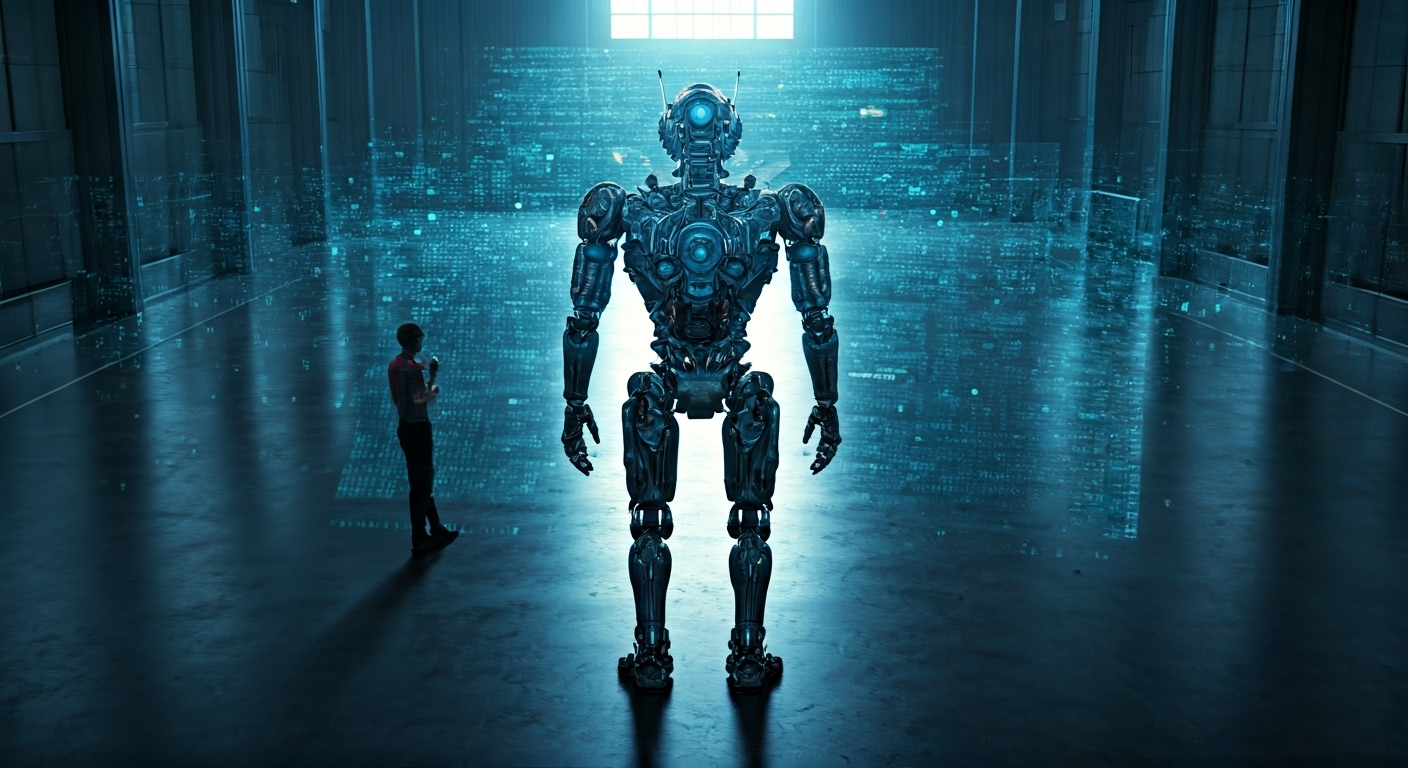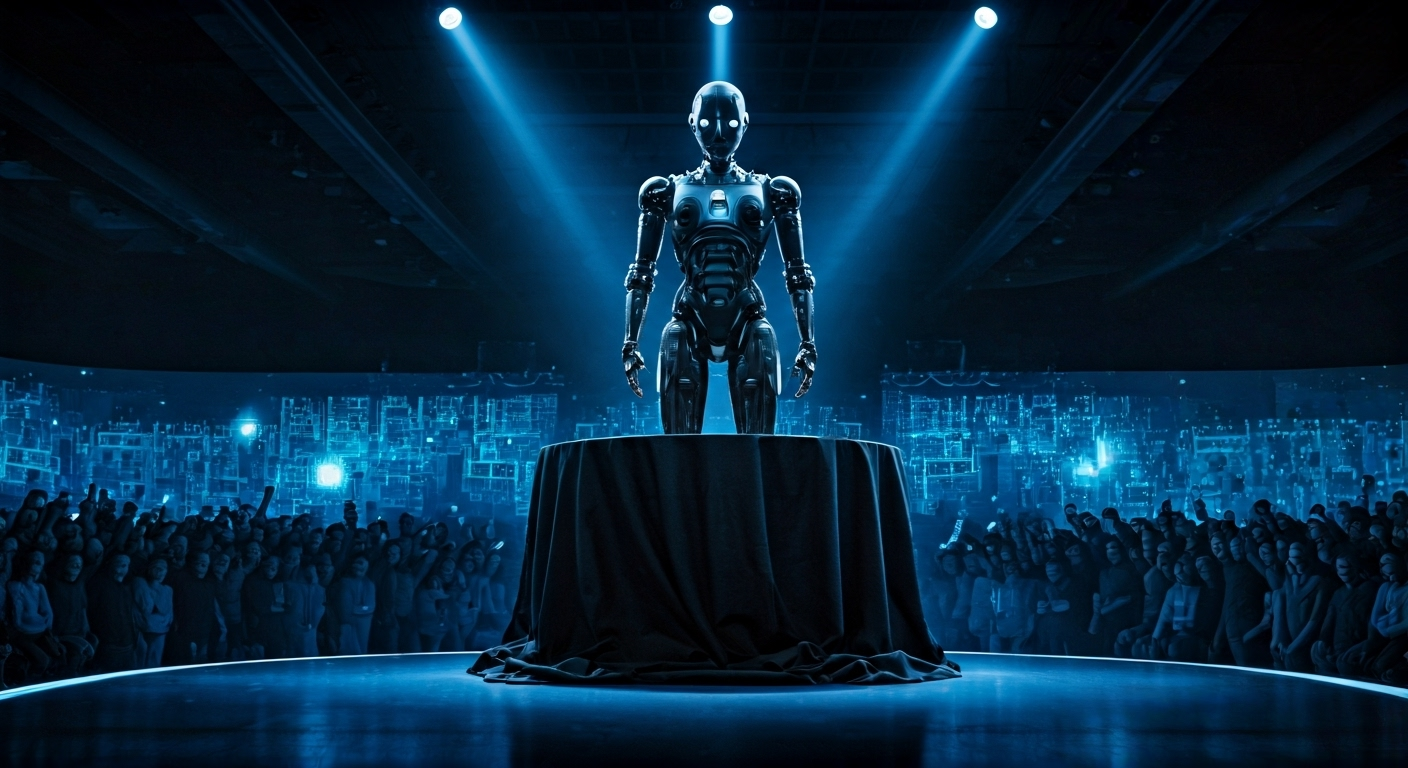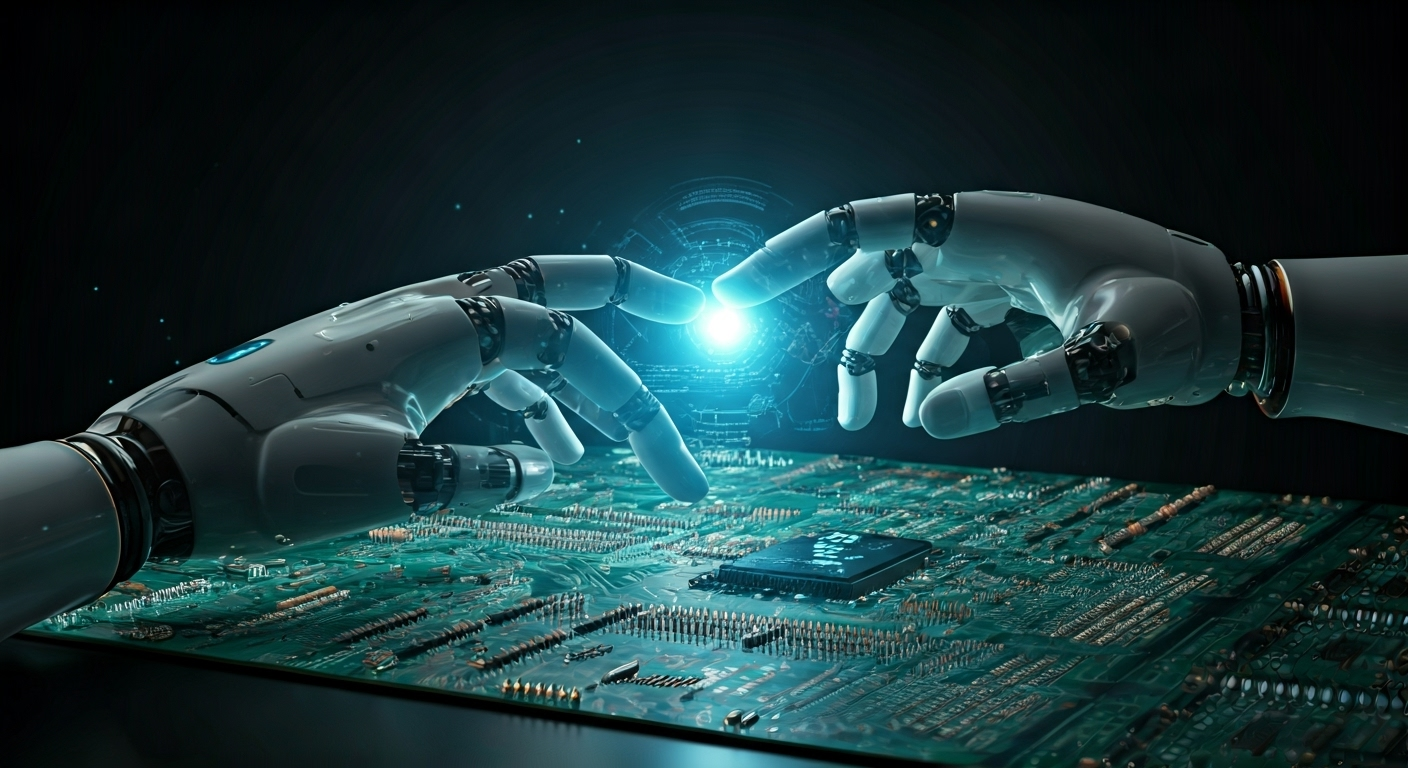August 8, 2025
Discover Google’s New AI Robot: Revolutionizing Robotics

Greg Kopyltsov
Founder
google’s new ai robot


The robotics landscape has shifted dramatically with the unveiling of Gemini Robotics by Google. This pioneering AI system marks a leap from theoretical advances to tangible progress in how artificial intelligence can interact with and maneuver within our physical world. Powered by generative AI and crafted by Google DeepMind, Gemini Robotics is designed to understand environments, interpret natural language, and take safe, informed actions. As this breakthrough reshapes the role of AI in robotics, it paves the way for more capable, collaborative robots in everyday life.

Google DeepMind’s latest milestone, Gemini Robotics, redefines what robots can achieve by connecting Gemini’s cognitive strengths to the physical world. Unlike prior AI models focused purely on digital tasks, Gemini Robotics empowers machines with the ability to see, interpret, and act—bridging perception and hands-on action.
This next generation of humanoid robots leverages vision-language-action (VLA) intelligence, letting them adapt to new objects, follow varied instructions, and work in dynamic environments. So, what is Google’s new AI robot, and how does it differ? Gemini Robotics offers not just smarter, but truly versatile robots ready for real-world challenges.
Shifting from previous models, Google’s Gemini Robotics introduces an unprecedented leap in adaptability and dexterity. Earlier robots, including those from Boston Dynamics, showcased impressive hardware—like agile movement or lifelike motion—but often relied on limited, task-specific programming. The new Gemini Robotics model changes this by integrating generative AI with vision-language-action capabilities.
With Gemini Robotics, the focus moves beyond single-purpose robots to a system that can generalize across different robot types. This model works on diverse platforms, from bi-armed research robots to advanced humanoids such as Apptronik’s Apollo. Its ability to adapt to new instructions, objects, and environments means that it can handle scenarios it wasn’t explicitly trained for—something previous models struggled with.
In short, Gemini Robotics isn’t just a smarter robot—it’s a flexible intelligence platform. By combining Google DeepMind’s advancements in generative AI with embodied reasoning, Gemini Robotics sets a new standard for the next generation of humanoid robots and broadens what’s possible in the field.
At the heart of Gemini Robotics lies a vision shaped by Carolina Parada, Google DeepMind’s head of robotics. The core inspiration was to bring “embodied” reasoning to robots—giving them the human-like capacity to understand and interact with the world around them. This is achieved through a powerful vision-language-action framework, allowing robots to comprehend complex scenes and react safely.
Responsible development is a cornerstone of the project. Gemini Robotics adopts a layered, holistic approach, combining classic physical safety controls (such as collision avoidance) with high-level semantic understanding. This ensures that robots can make informed, context-aware decisions before taking action.
Gemini Robotics also benefits from the Robot Constitution, a system inspired by Isaac Asimov’s principles but made practical for today’s AI. This approach, supported by the new ASIMOV dataset and a strong safety council, helps align robotic actions with human values, enabling the next generation of robots to operate both safely and ethically—even when running without a cloud connection.

Gemini Robotics stands out for its integration of cutting-edge generative AI and new AI models optimized for robotics. These innovations enable robots to reason across multiple modes—vision, language, and action—creating a robust foundation for tackling complex, real-world scenarios.
By harnessing multimodal reasoning, Gemini Robotics interprets instructions, evaluates physical environments, and plans actions—all in one seamless process. These technical breakthroughs make robots not just reactive, but proactive collaborators, capable of understanding context and adapting their behavior to suit changing needs.
One standout feature of Gemini Robotics is its local model, which runs AI directly on the robot—no constant internet connection needed. This on-device AI means robots operate at the edge, processing information right where the action happens, in the real world.
Why does this matter? Running AI locally significantly boosts performance. There’s no waiting for data to travel to the cloud and back, resulting in almost instant responses. It also means your robot can keep working reliably—even if Wi-Fi drops out or the cloud service goes offline.
From a user experience standpoint, you get more responsive robots that don’t depend on an always-on connection. Google’s approach to edge computing strengthens both security and privacy, as sensitive data stays on the device instead of being transmitted across networks. This makes Gemini-powered robots not only smarter, but safer and more dependable for real-world use.
Operating Gemini Robotics in the physical world without internet connectivity brings major advantages. Local processing keeps sensitive interactions and visual data within the robot itself, reducing exposure to cyber threats. Users benefit from improved data privacy since there’s no constant transmission to remote servers.
Performance also gets a lift; tasks are completed faster due to on-device computation, and robots remain operational during network outages. This independence is crucial for safety in dynamic environments, where split-second decisions matter.
Let’s compare the differences:
Aspect
Local Processing (On-Device AI)
Cloud-Based Systems
Data Security
High—data remains on robot
Lower—data sent over networks
Privacy
Enhanced—limited external exposure
Limited—requires data sharing
Performance Speed
Immediate—minimal lag
Potential delays due to transmission
Reliability
Consistent—works offline
Dependent on internet connection
User Experience
Improved responsiveness and control
Can be affected by network issues
By relying on local processing, Gemini Robotics sets the standard for secure, private, and reliable AI robots.
Gemini Robotics is not just a concept—it’s already transforming how robots function in the real world. Through its vision-language-action model, Gemini-powered robots are taking part in a tester program to tackle everyday challenges and specialized tasks alike.
Whether assisting in homes, offices, or research labs, these next generation humanoid robots can interpret complex environments, follow natural language commands, and adapt on the fly. This versatility is opening doors to practical deployments where robots can truly make a difference in daily life and beyond.
With Gemini Robotics, the possibilities for real-world robot applications expand dramatically. It’s not just about automating routine chores—these robots are designed for highly adaptive, interactive work in varied settings and with different robot types.
Consider these practical use cases:
This range of applications shows how the Gemini Robotics model bridges the gap between “robotic” and “the real thing”—making advanced, adaptable automation a reality.
The ability of Gemini Robotics to master complex skills demonstrates the power of multimodal reasoning in real-world settings. By leveraging the MuJoCo physics simulator and its own advanced understanding, the robot can handle intricate, multi-step tasks.
For example, playing ping pong requires rapid responses, spatial awareness, and adaptive planning—skills that Gemini Robotics naturally combines. The robot reads the ball’s movement, predicts its trajectory, and adjusts its actions with remarkable precision.
Origami folding, another challenging feat, showcases the platform’s dexterity and detailed object manipulation. The AI interprets step-by-step instructions and spatial relationships, folding paper into delicate shapes. As Carolina Parada notes, “Gemini Robotics is moving robots closer to the kind of generalization and reasoning people take for granted.” These demonstrations aren’t just technical showpieces—they’re proof that Google’s AI robot can tackle sophisticated, real-world tasks with human-like skill and adaptability.
To accelerate development and responsible innovation, Google DeepMind has teamed up with leading research partners, universities, and industry collaborators. This network includes iconic names like Boston Dynamics, Apptronik, and trusted testers from Agile Robots to Agility Robotics.
These partnerships are more than just technical alliances—they’re shaping the next generation of robotics through shared research, safety benchmarks, and real-world deployments. By involving a broad ecosystem, Google is ensuring that Gemini Robotics will have a lasting, positive impact on AI, robotics, and society as a whole.
The future of Gemini Robotics is being shaped through broad collaboration. Google DeepMind’s partnerships span industry and academia, combining expertise to advance AI robotics safely and effectively.
Key collaborators include:
By joining forces with these organizations, Google DeepMind is creating a robust ecosystem for developing, testing, and deploying the next generation of helpful, general-purpose robots.
KeywordSearch has an AI Audience builder that helps you create the best ad audiences for YouTube & Google ads in seconds. In a just a few clicks, our AI algorithm analyzes your business, audience data, uncovers hidden patterns, and identifies the most relevant and high-performing audiences for your Google & YouTube Ad campaigns.
You can also use KeywordSearch to Discover the Best Keywords to rank your YouTube Videos, Websites with SEO & Even Discover Keywords for Google & YouTube Ads.
If you’re looking to SuperCharge Your Ad Audiences with AI - Sign up for KeywordSearch.com for a 5 Day Free Trial Today!
In conclusion, Google’s new AI robot, powered by Gemini technology, signifies a monumental leap in the field of robotics. With its on-device AI capabilities and advanced edge computing, it not only enhances performance and security but also opens up a realm of possibilities across various applications, from mundane household tasks to intricate skills like playing ping pong. The collaboration with universities and industry partners further emphasizes the commitment to shaping the future of robotics. As we witness these fascinating advancements, it's an exciting time to consider how such innovations will impact our daily lives and industries. Stay ahead of the curve and explore how these developments can benefit you.
Google’s latest Gemini Robotics model is based on Gemini 2.0 and features advanced generative AI. It supports multimodal reasoning across text, images, and audio, with a vision-language-action architecture. This flexibility enables it to control various robot types, offering unprecedented dexterity and generalization capabilities.
On-device AI allows the Gemini Robotics model to process data locally, leading to enhanced performance, security, and reliability. Edge computing reduces lag, supports real-time responses, and safeguards sensitive information—enabling more autonomous and efficient humanoid robot development compared to cloud-dependent systems.
Google’s Gemini-powered AI robots represent a leap in generalization and reasoning, setting new standards for adaptability and safety. This breakthrough will influence the next generation of robotics, ushering in practical, versatile AI applications across industries and accelerating the broader future of artificial intelligence.